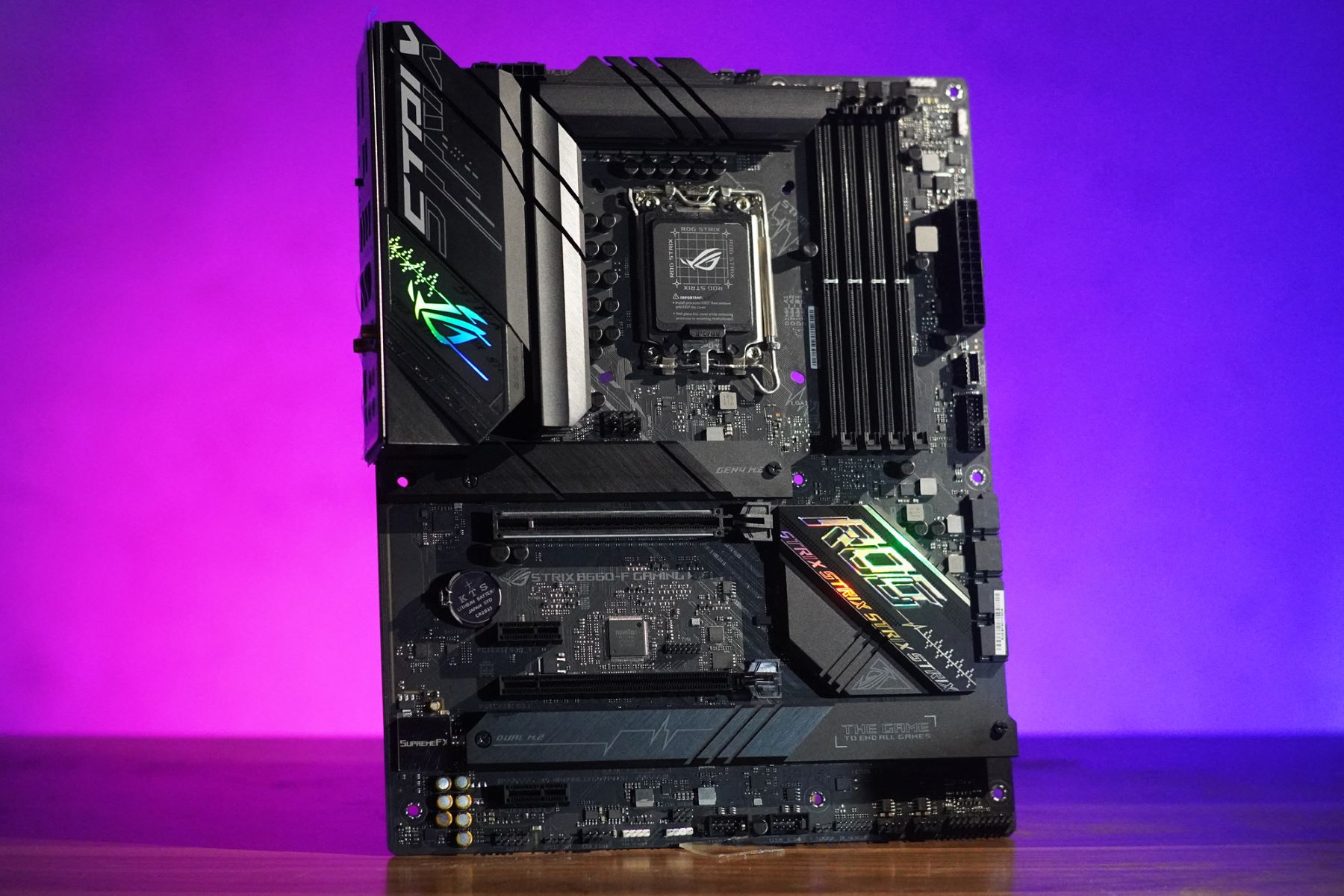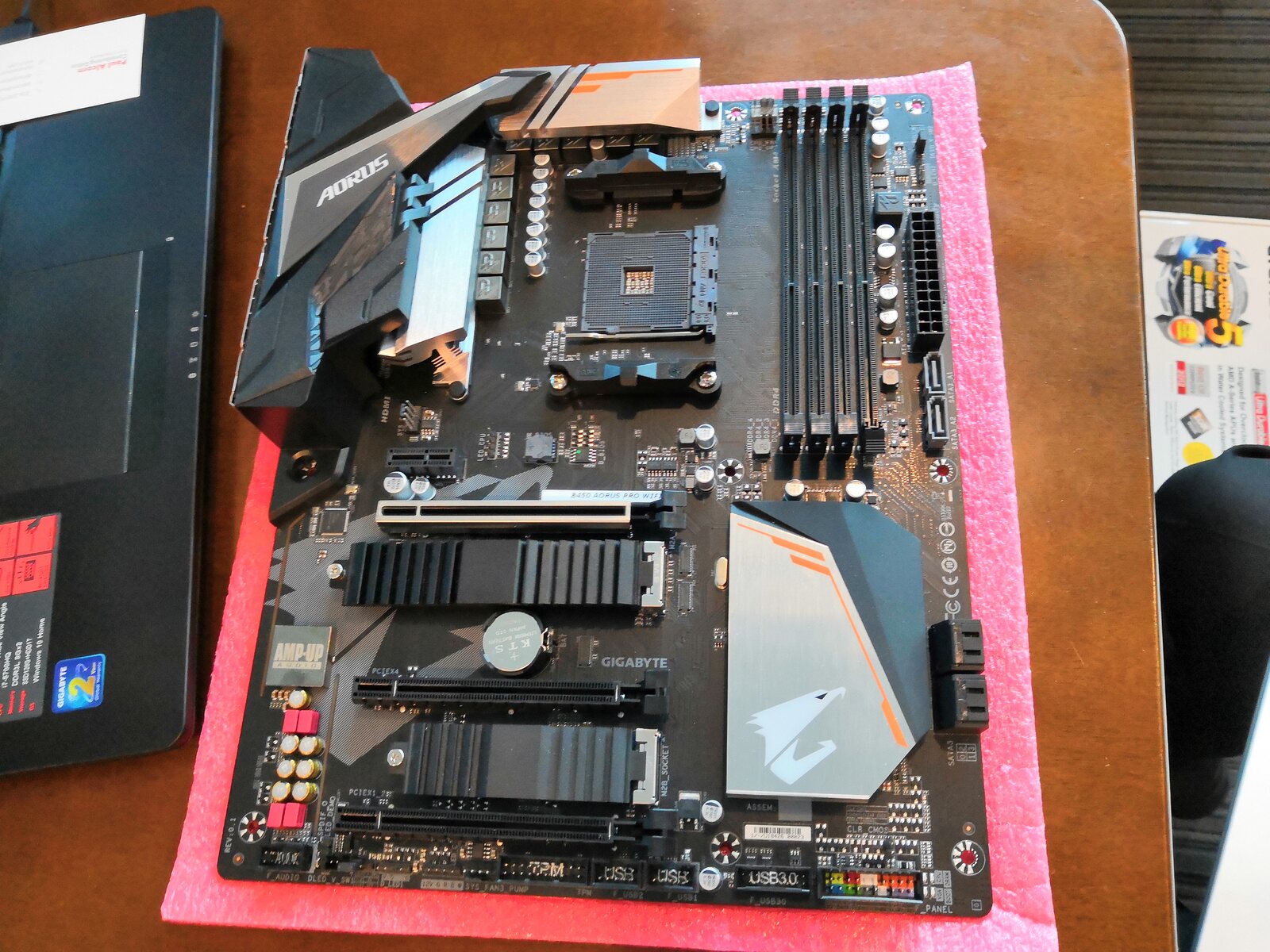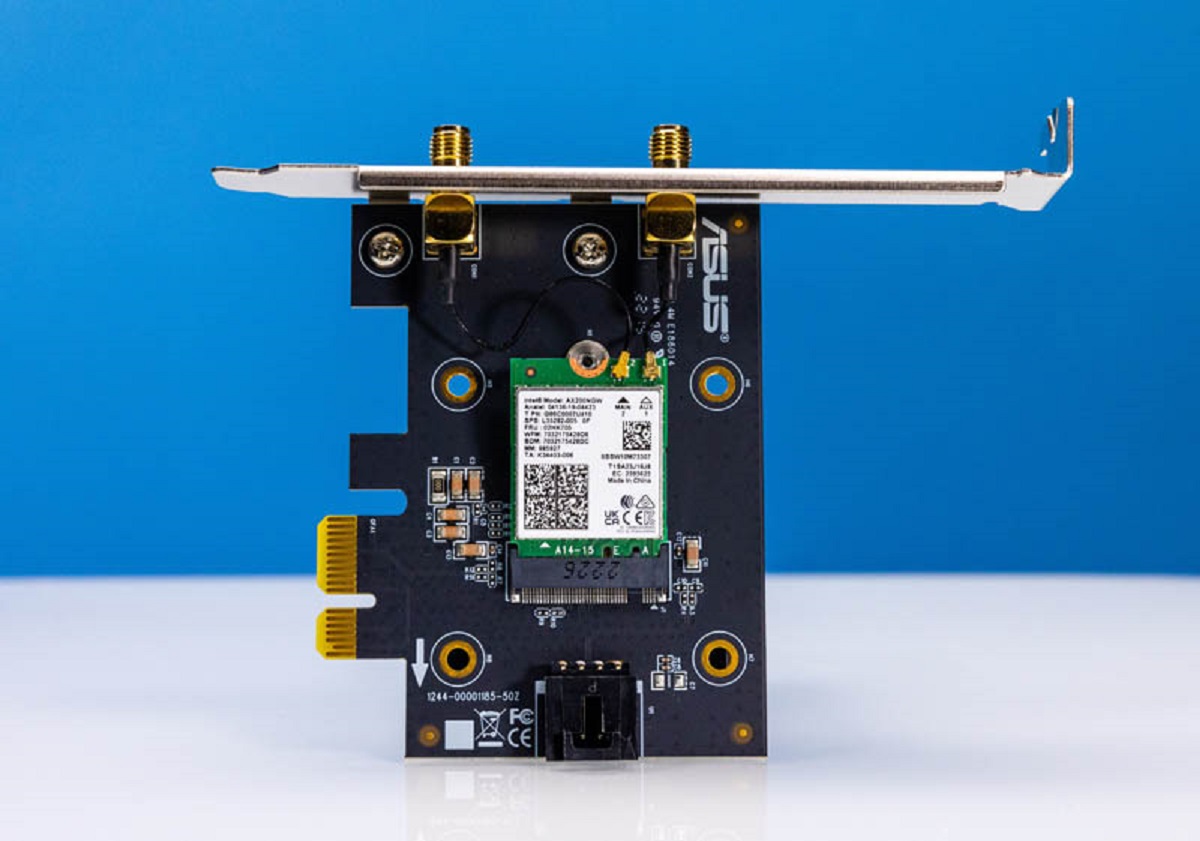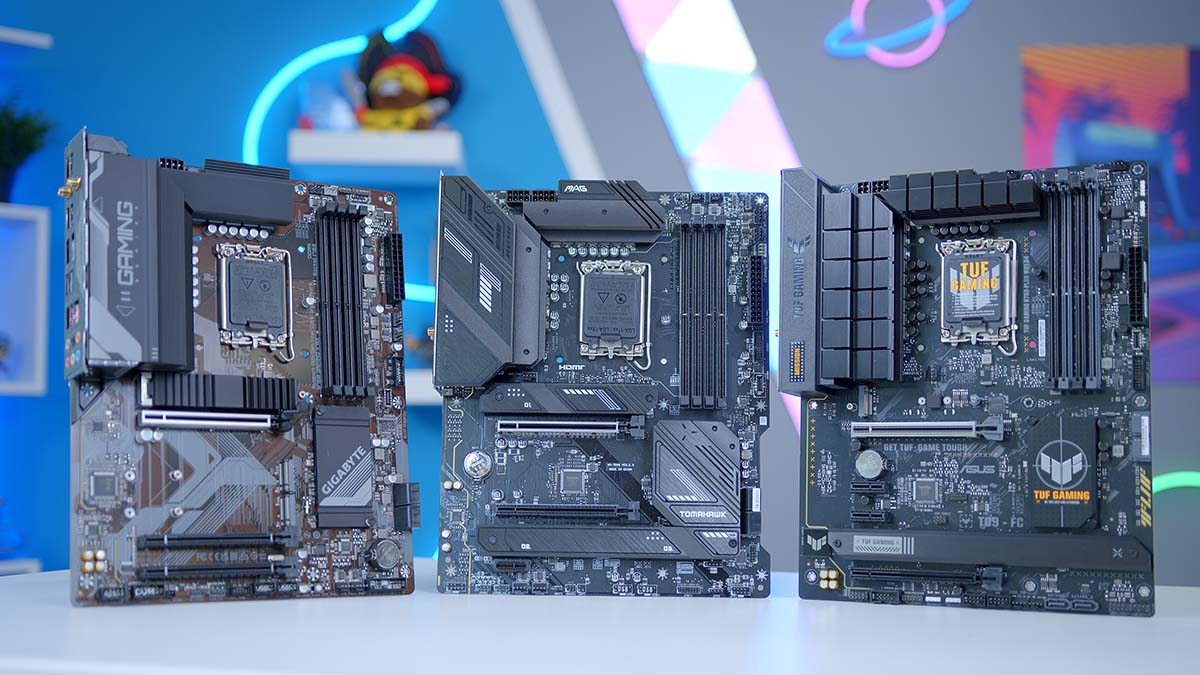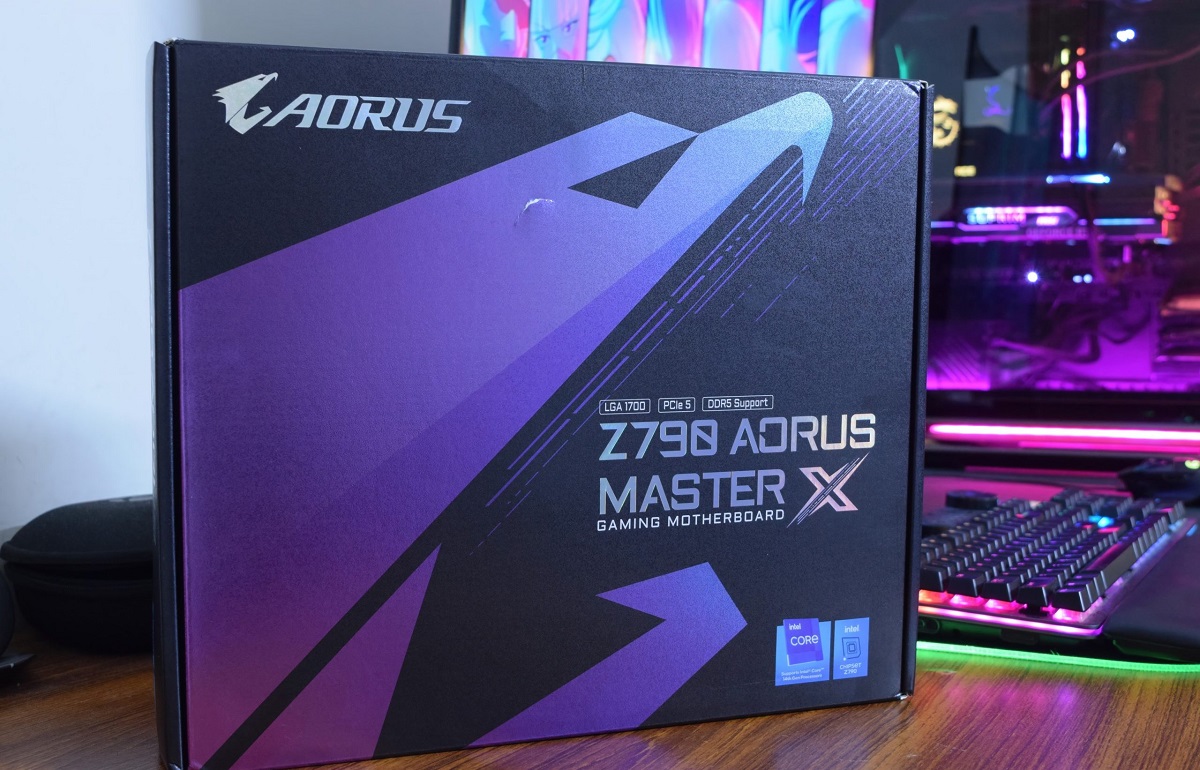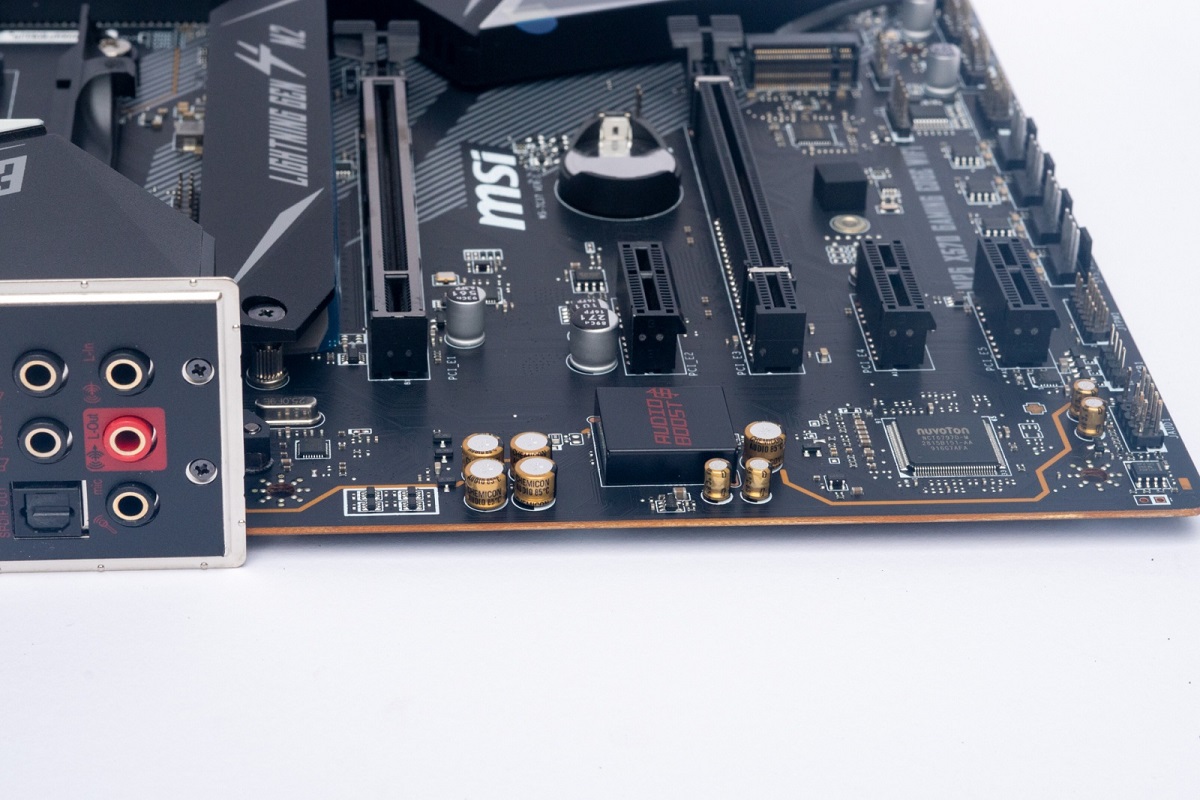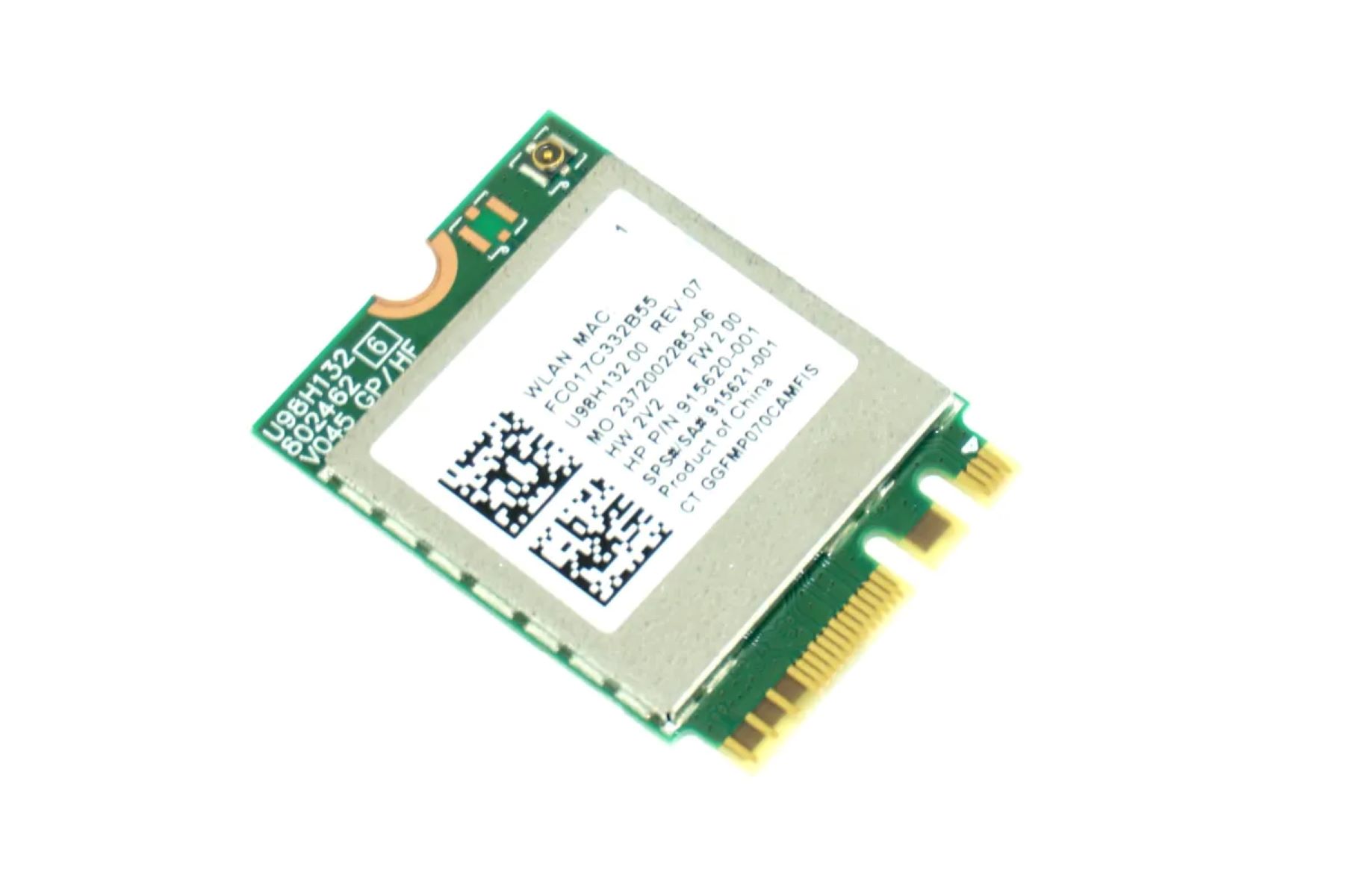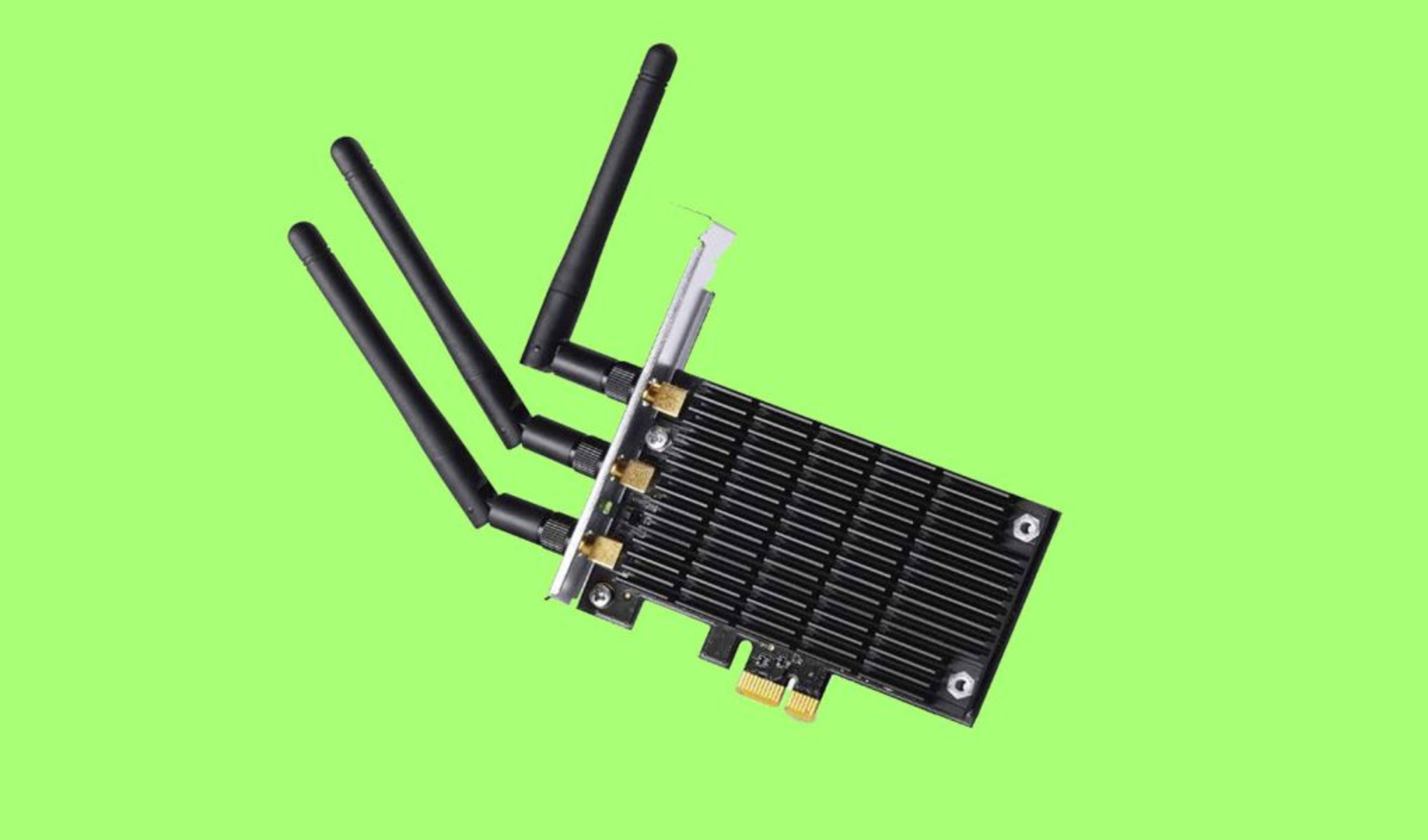Introduction
Welcome to the digital age, where everything is connected and convenience is key. In today’s world, having a fast and reliable internet connection is more important than ever. Whether you’re browsing the web, streaming videos, or playing online games, a stable internet connection is crucial for a smooth and enjoyable experience. When it comes to building a computer, one component that determines the connectivity capabilities is the motherboard. And if you’ve come across the term “WiFi” in relation to motherboards, you might be wondering what it means and why it’s important.
In this article, we will explore the concept of WiFi on a motherboard, its benefits, and how it works. We will also discuss whether you really need WiFi on a motherboard and provide some considerations when choosing a motherboard with WiFi capabilities. By the end of this article, you’ll have a better understanding of WiFi on motherboards and its role in connecting your computer to the world wide web.
What is a motherboard?
Before we delve into the specifics of WiFi on a motherboard, let’s start by understanding what a motherboard is. In simple terms, a motherboard is the main circuit board of a computer. It is a crucial component that connects all the hardware and allows them to communicate with each other.
The motherboard acts as a central hub, providing power and connectivity to other essential components such as the processor, memory, storage devices, and expansion slots. It also houses important features like the BIOS (Basic Input/Output System) and various connectors for peripherals such as USB ports, audio jacks, and networking ports.
Without a motherboard, a computer would simply be a collection of isolated components. It serves as the backbone that integrates all the hardware, allowing them to work together seamlessly. The size and shape of a motherboard may vary depending on the form factor, which determines its compatibility with different computer cases.
In today’s rapidly advancing technology landscape, motherboards have evolved to accommodate the ever-increasing demands of computer users. They come in various configurations, each designed for different purposes and targeted at specific user needs. From entry-level motherboards for basic computing tasks to high-end gaming and professional-grade motherboards packed with advanced features, there is a wide range of options available in the market.
Now that we understand the basic concept of a motherboard, let’s dive into the topic of WiFi and its integration onto these essential computer components.
What is WiFi?
WiFi, short for Wireless Fidelity, is a technology that allows devices to connect to the internet without the need for physical cables. It uses radio waves to transmit data between devices and a wireless router or access point. With WiFi, you can access the internet wirelessly from anywhere within the range of the network.
WiFi has become an integral part of our daily lives, providing the flexibility and convenience to connect multiple devices simultaneously. Whether it’s connecting your smartphone, laptop, tablet, or smart home devices, WiFi enables seamless communication and access to online resources.
The main advantage of WiFi is its mobility. Unlike traditional wired connections, WiFi allows you to move freely within the coverage area without the limitation of physical cables. This makes it ideal for homes, offices, and public spaces where mobility and flexibility are essential.
WiFi operates on various frequency bands, such as 2.4 GHz and 5 GHz, with each offering different advantages. The 2.4 GHz band provides better coverage but may suffer from interference from other devices that use the same frequency, such as microwaves and cordless phones. On the other hand, the 5 GHz band offers faster speeds and less interference, but it has shorter range compared to the 2.4 GHz band.
To connect to a WiFi network, you need a compatible device with WiFi capabilities, such as a computer, smartphone, or tablet. These devices use built-in WiFi antennas to receive and transmit data to and from the wireless router or access point.
Overall, WiFi has revolutionized the way we connect to the internet, providing a wireless solution that enhances mobility and convenience. Now that we understand the basics of WiFi technology, let’s explore how it is integrated into motherboards to provide wireless connectivity.
WiFi on a motherboard
Traditionally, motherboards did not come with built-in WiFi capabilities, requiring users to install a separate WiFi card or dongle to enable wireless connectivity. However, with the growing demand for wireless connectivity and the advancement of technology, many modern motherboards now come with integrated WiFi functionality.
Having WiFi on a motherboard means that you can connect to a wireless network without the need for any additional hardware. This eliminates the hassle of installing and managing a separate WiFi card or dongle, making the setup process simpler and more streamlined.
Motherboards with WiFi capabilities typically have an onboard WiFi module, which includes an antenna and the necessary circuitry to connect to a wireless network. These modules are designed to support the latest WiFi standards, such as 802.11ac or 802.11ax (also known as WiFi 6), ensuring faster speeds and better overall performance.
The inclusion of WiFi on a motherboard is especially beneficial for users who require wireless connectivity but want to minimize clutter and maximize space within their computer case. It also provides more flexibility in terms of the physical placement of your computer, as you are not restricted by the length of Ethernet cables.
Furthermore, having WiFi on a motherboard allows you to take advantage of other wireless features, such as Bluetooth. Many motherboards with integrated WiFi also support Bluetooth connectivity, enabling you to connect wireless peripherals, such as keyboards, mice, headsets, and speakers, without the need for separate Bluetooth adapters.
Overall, WiFi on a motherboard offers a convenient and efficient way to connect to the internet wirelessly, eliminating the need for additional hardware and providing more flexibility in terms of connectivity options. In the next section, we will explore the benefits of having WiFi on a motherboard in more detail.
Benefits of WiFi on a motherboard
Having WiFi integrated onto a motherboard offers several advantages for computer users. Here are some of the key benefits of having WiFi on a motherboard:
- Convenience: WiFi on a motherboard allows you to connect to the internet without the need for physical cables. This eliminates the hassle of managing and organizing cables and provides more flexibility in terms of device placement within the range of the wireless network.
- Wireless Mobility: With WiFi, you can enjoy the freedom to move around within the coverage area without being tethered to a wired connection. This is especially beneficial for laptops, allowing you to work or browse the internet from anywhere within the range of the WiFi network.
- Multiple Device Connectivity: WiFi enables you to connect multiple devices to the wireless network simultaneously. Whether it’s your laptop, smartphone, smart TV, gaming console, or IoT devices, having WiFi on a motherboard allows seamless connectivity for all your devices.
- Flexibility in Network Setup: WiFi on a motherboard eliminates the need for physical network infrastructure, such as Ethernet cables and ports. This makes it easier to set up a network in areas where running cables is not feasible or practical, such as rented apartments or temporary locations.
- Bluetooth Connectivity: Many motherboards with integrated WiFi also support Bluetooth connectivity. This allows you to connect Bluetooth-enabled peripherals, such as keyboards, mice, headsets, and speakers, without requiring separate Bluetooth adapters.
- Space and Clutter Reduction: By having WiFi integrated onto a motherboard, you can save space within your computer case. This is especially beneficial for compact builds or systems with limited expansion slots, as there is no need to install a separate WiFi card or dongle.
These benefits make WiFi on a motherboard a desirable feature, particularly for those who value convenience, mobility, and the flexibility to connect multiple devices wirelessly. However, it’s important to note that WiFi on a motherboard may not be necessary or preferred for every computing scenario. In the next section, we will discuss factors to consider when deciding whether or not you need WiFi on a motherboard.
How does WiFi on a motherboard work?
To understand how WiFi on a motherboard works, let’s dive into the technical details. Motherboards with integrated WiFi capabilities typically come with an onboard WiFi module, which includes an antenna and the necessary circuitry to connect to a wireless network.
The WiFi module on the motherboard communicates with the wireless router or access point using radio waves. These radio waves operate on specific frequency bands, such as 2.4 GHz or 5 GHz, and utilize the IEEE 802.11 standards. The most common WiFi standards are 802.11ac and 802.11ax (WiFi 6), which provide faster speeds and improved performance compared to previous generations.
When you power on your computer, the motherboard’s firmware initializes the onboard WiFi module. The module scans for available wireless networks in the vicinity and displays them as options for you to connect. You can select the desired network and enter the appropriate credentials, such as a password, to establish a connection.
Once connected, the WiFi module on the motherboard will handle the data transmission and reception over the wireless network. It takes the data from your computer, encodes it into radio waves, and sends it to the wireless router or access point. Similarly, it receives data from the wireless network, decodes it, and sends it to your computer for processing.
The speed and range of the WiFi connection depend on various factors, including the WiFi standards supported by the motherboard, the signal strength of the wireless network, the number of devices connected to the network, and any potential interference from other electronic devices or physical obstructions.
It’s worth mentioning that some motherboards may come with external antennas, allowing for better signal reception and transmission. These antennas can be adjusted or replaced for optimal WiFi performance.
Overall, WiFi on a motherboard works by utilizing an onboard WiFi module, which communicates with a wireless router or access point using radio waves. This enables you to connect to a wireless network and enjoy the benefits of wireless connectivity without the need for additional hardware.
Do I need WiFi on a motherboard?
Whether or not you need WiFi on a motherboard depends on your specific needs and use cases. Here are some factors to consider when deciding if WiFi on a motherboard is necessary for you:
- Internet Usage: If you heavily rely on the internet for browsing, streaming, online gaming, or work-related tasks, having WiFi on a motherboard can provide the convenience of wireless connectivity. It allows you to connect to the internet without the need for physical cables, giving you greater flexibility in device placement and mobility within the network’s range.
- Networking Requirements: Consider your networking requirements when deciding if WiFi on a motherboard is essential. If you have a wired infrastructure in place, such as Ethernet connections throughout your home or office, WiFi may not be necessary. However, if you want the flexibility to connect wirelessly or if your networking needs change frequently, having WiFi on a motherboard can be advantageous.
- Device Compatibility: Assess the devices you plan to connect to your computer. If you have multiple devices such as laptops, smartphones, tablets, or IoT devices that rely on wireless connectivity, having WiFi on a motherboard allows for seamless connectivity without the need for additional hardware.
- Physical Space and Clutter: If you have limited physical space within your computer case or prefer a clean and clutter-free setup, having WiFi on a motherboard can be beneficial. It eliminates the need for a separate WiFi card or dongle, reducing the number of components inside your computer.
- Future-Proofing: Consider the future as well. While you may not currently require WiFi on a motherboard, it’s worth considering potential future needs. As technology evolves and wireless connectivity becomes increasingly prevalent, having WiFi on a motherboard can future-proof your system and provide flexibility as your networking requirements change.
Ultimately, the decision to have WiFi on a motherboard depends on your individual circumstances and preferences. If wireless connectivity, convenience, and flexibility are important to you, opting for a motherboard with built-in WiFi capabilities can be a valuable feature. On the other hand, if you have specific networking requirements that are better suited for wired connections or if you prefer to use a separate WiFi card or dongle, you may not need WiFi on a motherboard.
Before making a choice, consider your specific needs, evaluate the available options, and make an informed decision that aligns with your requirements and preferences.
Considerations when choosing a motherboard with WiFi
If you have decided to opt for a motherboard with built-in WiFi capabilities, there are several factors to consider before making a purchase. Here are some key considerations when choosing a motherboard with WiFi:
- WiFi Standards: Check the WiFi standards supported by the motherboard. The latest standards, such as 802.11ac or 802.11ax (WiFi 6), provide faster speeds and better performance compared to older standards.
- Antenna Placement: Consider the placement and design of the onboard WiFi antenna. Some motherboards may have external antennas that can be adjusted or replaced for better signal reception and transmission.
- Networking Speed: The speed of the WiFi connection provided by the motherboard can vary. Look for motherboards that offer higher speeds, especially if you require fast and reliable internet connectivity for activities such as online gaming or streaming high-definition content.
- Range and Signal Strength: Evaluate the range and signal strength of the motherboard’s WiFi capabilities. This is particularly important if you plan to use your computer in an area with a large physical distance between it and the wireless router.
- Additional Features: Consider if the motherboard offers any additional features such as Bluetooth connectivity or advanced networking options. These features can enhance your overall user experience and provide added convenience.
- Compatibility: Ensure that the motherboard with WiFi is compatible with other components in your system. This includes checking the compatibility with your processor, memory, and any expansion cards you may plan to install.
- Budget: Consider your budget and compare the pricing of different motherboards with WiFi capabilities. Determine the features that are essential to you and find a motherboard that offers the best balance between cost and performance.
Additionally, it’s beneficial to read reviews and customer feedback about the motherboard you are considering. This can provide insights into the real-world performance, reliability, and user experience of the WiFi capabilities.
Ultimately, choosing a motherboard with WiFi involves considering your specific needs, budget, and preferred features. By assessing these factors and researching different options, you can select a motherboard that meets your requirements and provides a seamless wireless connectivity experience.
Conclusion
WiFi on a motherboard has become an increasingly desirable feature in today’s digitally connected world. It provides the convenience of wireless connectivity, allowing you to connect to the internet without the need for physical cables or additional hardware. Whether you are browsing the web, streaming media, gaming online, or connecting various devices, WiFi on a motherboard offers flexibility and mobility within the range of the wireless network.
When choosing a motherboard with WiFi, consider factors such as the supported WiFi standards, antenna placement, networking speed, range, and additional features. Ensure compatibility with other components and find a balance between cost and performance. By making an informed decision based on your specific needs and preferences, you can enjoy the benefits of WiFi on your motherboard.
However, it’s important to note that WiFi on a motherboard may not be necessary for everyone. If you have a wired network infrastructure in place or prefer to use a separate WiFi card or dongle, you may not require WiFi on a motherboard. Assess your networking requirements, physical space limitations, and future needs to determine if WiFi on a motherboard is the right choice for you.
In conclusion, WiFi on a motherboard provides the convenience and flexibility of wireless connectivity for your computer system. It eliminates the need for additional hardware, reduces cable clutter, and enhances your overall user experience. Whether you choose a motherboard with WiFi capabilities or prefer alternative solutions, the important thing is to ensure that your computer meets your networking needs and allows you to stay connected in an efficient and seamless manner.







